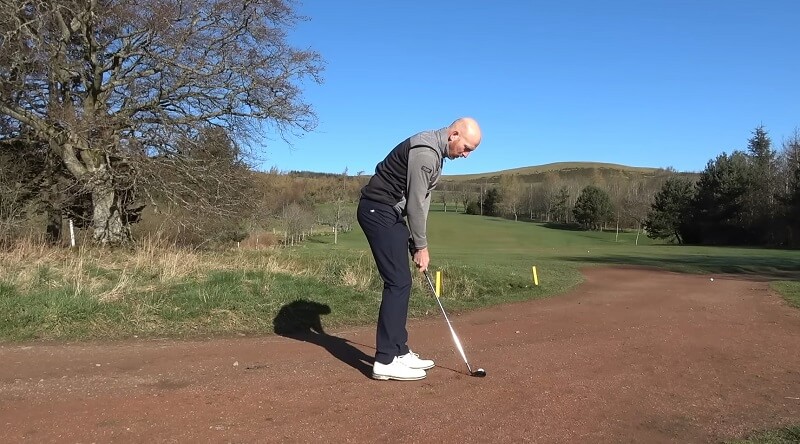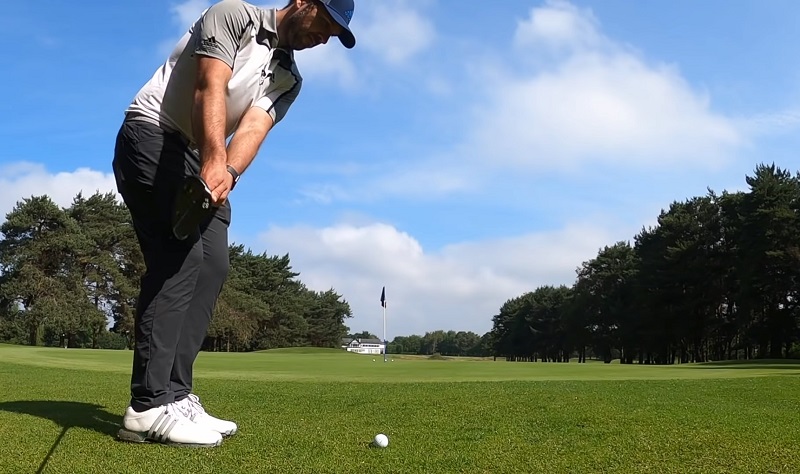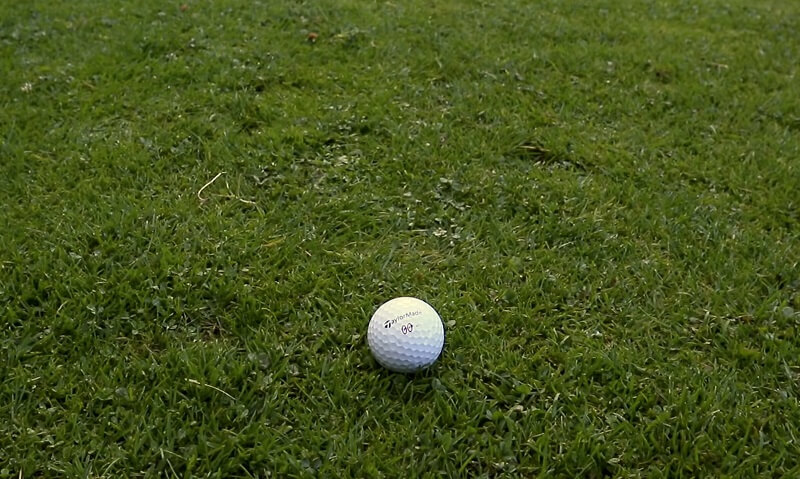Golfers of all skill levels can find themselves in a tight spot when they’re faced with a difficult lie. A tight lie, also known as “tight grass,” is especially challenging and easy to face in any golf play. In this article, we’ll discuss what exactly constitutes a tight lie in golf and provide some tips on how to play from them successfully.
What Is A Tight Lie In Golf?
A tight lie in golf is a ball that is sitting very close to the ground, such as in thick grass or on a hardpan surface. The key factor here is that the lie of the ball has little room for error due to its proximity to the ground. This type of situation can be difficult to play from since it does not allow for much flexibility in terms of ball trajectory or distance.
Players must take extra care to strike the ball cleanly and ensure that they hit it with the correct trajectory and spin. Tight lies can also make it difficult for golfers to control their distance, as small adjustments in swing path or clubface angle can have a big effect on ball flight. It is important for golfers to be aware of the challenges associated with hitting from a tight lie and adjust accordingly. Knowing when it’s safe to go for the green or when to lay up can make all the difference in your scorecard. With practice, you can learn how to hit shots from a tight lie effectively and confidently.
A lot of folks also refer to a tight lie as a thin shot or a bare lie. But there is a small difference between them. To take them apart and deeply understand how to play each of them better than you should know how to identify them. Scroll your cursor and keep reading the next part…
Tight Lie Vs Bare Lie
There is often confusion between a tight lie and a bare lie. A bare lie refers to a ball that is sitting in the fairway without any grass or debris around it, while a tight lie can be in rough or on hardpan. It’s important to differentiate between the two as playing from them requires different techniques and strategies.
How To Identify A Tight Lie In Golf?

Identifying a tight lie in golf can be done by looking at the surrounding area and assessing if there is enough room for the ball to move without hitting any obstacles. If you notice that the ball is sitting very close to the ground or surrounded by thick grass, then it is likely a tight lie. Additionally, if you feel like your shot is restricted or limited due to the nature of the lie, then it is most likely a tight lie.
A tight lie is common during summer or warmer months when golf courses dry out. It occurs more frequently when playing a links-style course since the ground is naturally firmer. The difference between a tight lie and other shots is that you don’t take a full shot with an iron or wood from the green. Instead, it’s much easier to use a putter with a smaller swing on a tight lie.
Golfers may encounter tight lies when playing in frozen conditions during the winter months. It requires a different club and swing type to play the ball effectively, so golfers need to be prepared to make changes to their game when necessary.
Why Tight Lies Are Troublesome For Higher-Handicappers
Tight lies can be a nightmare for higher handicappers. When you hit the ball from a tight lie, there isn’t much turf between the golf ball and your clubface. This means that if you don’t make contact perfectly, the golf ball won’t go where you want it to. And if you don’t have confidence in your swing, this can lead to all sorts of mishits and misdirections, making it difficult to get any consistency with your game.
Therefore, it’s important for higher handicappers to practice hitting shots from tight lies so they develop the necessary touch and confidence in their swings. Spend some time at the driving range hitting tricky spots (such as up against a fence or tree), and you’ll get used to the feeling of tight lies. Even if it’s frustrating at first, keep at it, and eventually, you’ll be able to make an effective swing from any type of lie.
So, how to play from a tight lie, even if you are a higher-handicappers or in any kind of golf’ level. Dive into and explore our advice right away…
How To Play From A Tight Lie

Step 1: Set up the ball position
To hit a ball from a tight lie on the fairway, it’s important to position the ball correctly and make solid contact. Placing the ball too far forward in your stance can result in the clubhead hitting the ground first before reaching the ball, which can cause the clubhead to bounce off or dig into the ground. To avoid this, make sure you place the ball in the center of your stance or slightly back. This will help the clubhead to make clean contact with the ball and prevent the chances of skulled or fat shots that could come from trying to scoop the ball. By maintaining this position, you’ll have a better chance of hitting the ball cleanly and effectively.
Step 2: Press your hand forward
To execute a shot from a tight lie in golf, place your hands slightly forward at the address. This setup helps promote a descending blow into the ball. Consider positioning your hands in a way that allows you to trap the ball when it reaches impact. Lean your shaft slightly forward at the address and try to maintain the lag throughout the downswing and contact with the ball. Doing so will help create the necessary club head speed for the shot while minimizing the potential for digging into the turf.
Step 3: Put your weight into the front foot than the other
When taking a shot from a tight lie, it’s important to maintain your body weight on the front foot throughout the swing. This will help you stay balanced and create an even pressure in your backswing and downswing. Essentially, this can help prevent the club head from digging into the ground and ensure that your club head is making solid contact with the ball.
Step 4: Trap the ball
To trap the ball when dealing with a tight lie in golf, focus on the moment of impact. Position the ball slightly behind the center of your stance. Place more weight on your leading foot than your trailing foot. Take a three-quarter swing, and focus on capturing the ball between your clubface and the ground upon impact. Remind yourself to keep your hands ahead of the ball and maintain a downward swing to create clean contact and stop the ball cleanly.
Step 5: Don’t swing too hard and allow your arms to “relax” at impact
Swinging too hard will put a lot of pressure on the club head, which could result in it bouncing off or digging into the ground instead of making solid contact with the ball. To avoid this, focus on maintaining your wrist hinge and allowing your arms to relax at impact. This will reduce the amount of pressure you put into the shot and help you make a clean contact more consistently.
Step 6: Keep your head down
Finally, it’s important to keep your head down when playing from a tight lie. Keeping your head down will help you stay focused on the ball and maintain a consistent swing plane throughout the shot. It can also help you to remain balanced and keep the club head steady at impact, which is essential for generating solid contact with the ball.
Tips For Creating Better Performance With A Tight Lie

Knowing and practicing the right guidelines can be challenging for some. However, understanding how to utilize these steps, as well as some noteworthy tips during training, can help take your skills to new heights when dealing with a tight lie. Following our tips below may help you a lot…
- Make sure to practice hitting from tight lies at the driving range or on the course before you play an important round of golf. This will help build confidence and make it easier to hit your shots with accuracy and control.
- Use a slightly shorter backswing for tighter lies, as this will help you maintain control over the clubface and create a more upward trajectory for the ball.
- Keep your weight forward throughout the entire swing, as this will help you maintain control over the clubface and produce a better strike on the ball.
- Open up the clubface slightly when hitting from tight lies, as this will help prevent any mishits or misdirections.
- Make sure to use a slightly slower tempo when playing from tight lies as this will help reduce any tension in your swing and ensure that you don’t hit down on the ball too much.
Besides, to enhance your skill in resolving and avoiding a tight lie, you want to know some mistakes that you may make when playing a tight lie. Go on then; we will tell you about these mistakes now…
Common Mistakes When Playing From A Tight Lie And How To Avoid Them
The difficulty lies in finding the right balance between power and accuracy, as well as having the correct technique to ensure you don’t leave your ball in an even worse position than when you started. Unfortunately, many golfers make common mistakes that lead to poor shots when playing from a tight lie and these errors can be costly. That’s why we list here some common mistakes for you to identify and avoid them.
Hitting down too much on the ball
To avoid contact with the ground and maintain distance, it’s advised to avoid excessive downward force on the ball during pickups from compact soil conditions. A recommended approach is to aim for a loftier angle and maintain a forward-leaning stance for better compression.
Setting up incorrectly
Your setup should be slightly more open than normal, with your feet closer together and the ball positioned more forward in your stance. Additionally, make sure that your weight is shifted to the front foot and that you maintain good balance throughout the swing. Doing this will help you avoid hanging back on the shot and maintain control of the ball. Finally, adjust your grip accordingly to ensure that your hands are close together, allowing you to strike down and through the golf ball rather than lifting it off the ground.
Taking too big of a backswing
Swinging the club too far back can make it hard to extricate yourself from a tricky shot such as a tight lie. Inconsistency is the likely outcome of an overly long backswing. To make cleaner contact with the ball, opt for a shorter backswing that maintains control over the clubface.
Conclusion
Understanding what a tight lie is and how to play from them is an essential part of becoming a better golfer. Make sure to practice hitting from tight lies at the driving range or on the course before you play an important round of golf so that you can build confidence in your game. Additionally, try to avoid the common mistakes listed above, as this will help you get better results from your shots. With practice and dedication, playing from tight lies will become much easier and help you lower your scores.
FAQs
What Wedge To Use On A Tight Lie?
When dealing with a tight lie around the green in golf, experts suggest using a low bounce wedge with typically 4-6 degrees. The low bounce angle is ideal for firm turf conditions and hard or thin, dirt-like sand bunkers. It is designed to promote clean ball contact, which will allow you to showcase precision in your short game.
How Can I Hit Fairway Woods Off Tight Lies?
To perfect your fairway wood swing, there are a few necessary steps you should consider. Firstly, align your feet, shoulders, and hips with the target line. Second, maintain a firm grip on the club to improve control. During the swing, keep your weight on the front foot and your lower body steady. Additionally, keep your head down and try to use a sweeping motion to enhance clubface control. Finally, practice taking swings on tight lies to get a feel for the swing’s impact.
How Can I Hit A Gap Wedge Off A Tight Lie?
When hitting a gap wedge off a tight lie, it is important to adjust your stance and ball position accordingly. Position the ball slightly back in your stance so that the swing’s bottom point is slightly ahead of the ball. This helps to create a descending strike, which is essential for producing good contact with the ball. Additionally, widen your stance to give yourself more balance and stability in the shot. will help ensure you get maximum loft and spin on your shot. Additionally, make sure you have an open clubface and accelerate through the swing to produce a crisp, clean contact.
How Can I Hit A High Chip Off A Tight Lie?
Hitting a high chip off a tight lie is challenging but can be done with practice and the right technique. First, set up in an open stance, meaning your feet should be slightly wider than shoulder-width apart. This will help you get underneath the ball to create a higher trajectory. When addressing the ball, make sure that your weight is shifted to your left side and that your hands are slightly ahead of the ball. When you swing, keep your arms relatively straight and use a steeper angle of attack than you would usually use for a chip shot. This will help get the ball up quickly and into an “open” position in the air so that it can land softly on the green. Finally, use a slightly longer follow-through to ensure that you don’t hit down on the ball too much and create too low of a trajectory for your shot.


